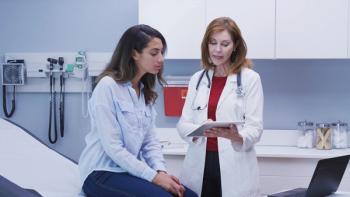
Six Ways to Address Poor Nutrition in Patients Receiving Chemotherapy
What can nurses do to prevent patients from experiencing nutrition problems due to loss of appetite?
Often, patients who have just had chemotherapy, or may be in the middle of treatment, are admitted to oncology units or general medical-surgical hospital floors. Computerized admission programs usually contain questions dealing with appetite and weight loss not attributed to diet, because according to the National Cancer Institute (NCI), 30% to 85% of
The loss of lean body mass, known as sarcopenia, is cited by the NCI as an independent variable for the cancer patient having a less than favorable prognosis.1
Some factors that aggravate a cancer patient’s inadequate intake of food are nausea and vomiting, differences in taste and smell, and trouble swallowing. The classic adverse event, constipation from the opioids often prescribed to control pain, is well known.1
Antibiotics may cause diarrhea and malabsorption of nutrients, too. Being in an unfamiliar environment with constant interruptions when you want to eat can also aggravate underlying depression and worsen anxiety related to the diagnosis.
Interventions
Once a patient has said they are experiencing weight loss or are not getting enough food, what can you as the nurse do, besides documenting it in their file, to prevent the slide into future nutrition problems?
- Order a nutrition consult. If you are doing the admission, this may come up as an auto generated consult that the nurse can submit without calling the physician. In some facilities, the nurse can order the consult even if it is not auto generated. If you work in the middle of the night and get an admission, the dietician can hopefully see the patient before lunch depending on the acuity of the setting.
- Use the family as a resource. Having family members or caregivers bring in the patient’s favorite food from a restaurant is fine unless doctors’ orders say otherwise. However, really finding out what patients like to eat at home is even better. Sometimes culture dictates what we like. In culturally diverse cities like Miami, New York, and Los Angeles, rice is often a staple at every meal.
- Recommend smaller, more frequent meals. Many hospital kitchens have food available in the refrigerator, like turkey or tuna sandwiches with cheese, as well as graham crackers, and apple sauce. Doesn’t sound like a lot, but if the patient is nauseous it might fill in the gaps between meals. According to the American Cancer Society (ACS), eating several times a day instead of 3 meals a day is suggested as a way of managing appetite loss due to treatment.2
- Manage nausea and vomiting. Look at the Medication Administration Record (MAR) and see if the patient is on an anti-emetic medication. Most of the time this is ordered on admission. Ask the patient if this has helped in the past. If that is the case, administer the drug before meals.
- Advise the patient to eat when hungry. Suggest that the patient make food a priority by deciding to eat what they want, when they want. If they want to eat breakfast food at night, that’s fine. The ACS stresses eating preferred food whenever patients are in the frame of mind to indulge.2 In other words, if French toast is what they want at 6 pm, great. Also, eating in a nice environment, or eating with family or friends can improve appetite. Even a hospital room can be transformed into a patient oasis with pleasant company.
- Consider meal replacement shakes. Cancer patients may need to keep their caloric intake high to make up for weight loss. Boost or Ensure are two popular over-the-counter meal replacement shakes. These shakes even come in easy to pour plastic bottles, no need to flip the top open as in the original container years ago. They may mean the difference between consuming sufficient calories versus having a caloric deficit. Don't forget that if the patient has a temperature they will lose moisture when the fever breaks. Taking in extra fluid could make up for this water loss.
Protein bars are a controversial subject, since they may be loaded with sugar that just give the patient empty calories and may raise their glucose levels. This may not be advised for a patient with cancer who has a comorbidity of diabetes. A better solution might be peanut butter, crackers, or even low fat/low sugar Greek yogurt under 30 grams of sugar for an 8 ounce serving.3 If a patient does want to try a protein bar, the best recommendation would be to have them check with their oncologist first.
References
- National Cancer Institute. National Cancer Institute website. Basic principles of nutrition in patients with cancer. Published 2018. https://www.cancer.gov/about-cancer/treatment/side-effects/appetite-loss/nutrition-hp-pdq Accessed June 6, 2018.
- American Cancer Society. Managing eating problems caused by surgery, radiation, and chemotherapy. American Cancer Society website. Published 2018. https://www.cancer.org/treatment/survivorship-during-and-after-treatment/staying-active/nutrition/nutrition-during-treatment/poor-appetite.html. Accessed June 2, 2018.
- American Cancer Society. Snacks and dashboard dining. American Cancer Society website. https://www.cancer.org/healthy/eat-healthy-get-active/take-control-your-weight/snacks-and-dashboard-dining.html. Accessed June 8, 2018.
Newsletter
Knowledge is power. Don’t miss the most recent breakthroughs in cancer care.



















































































